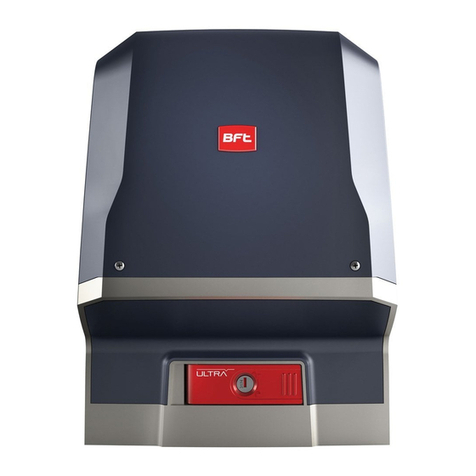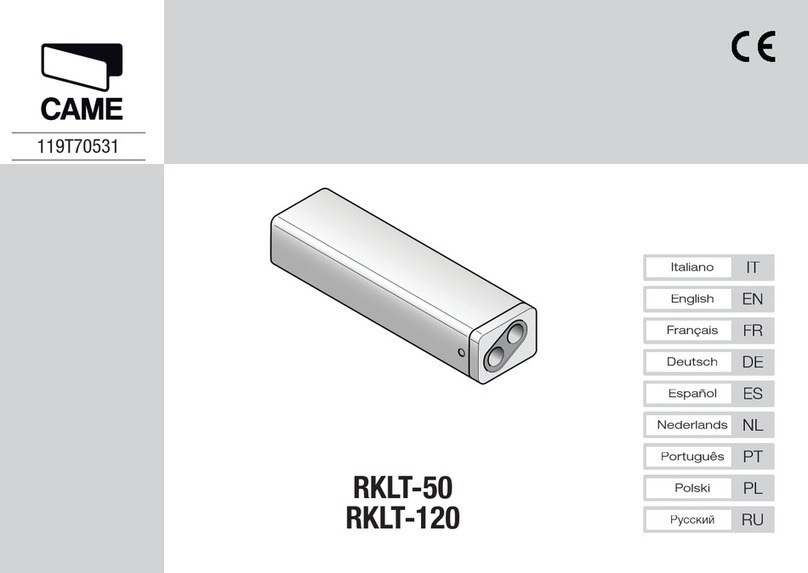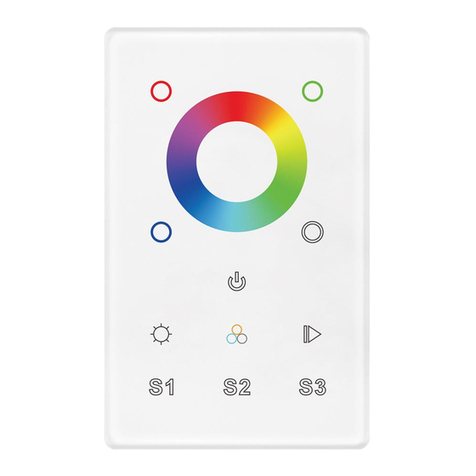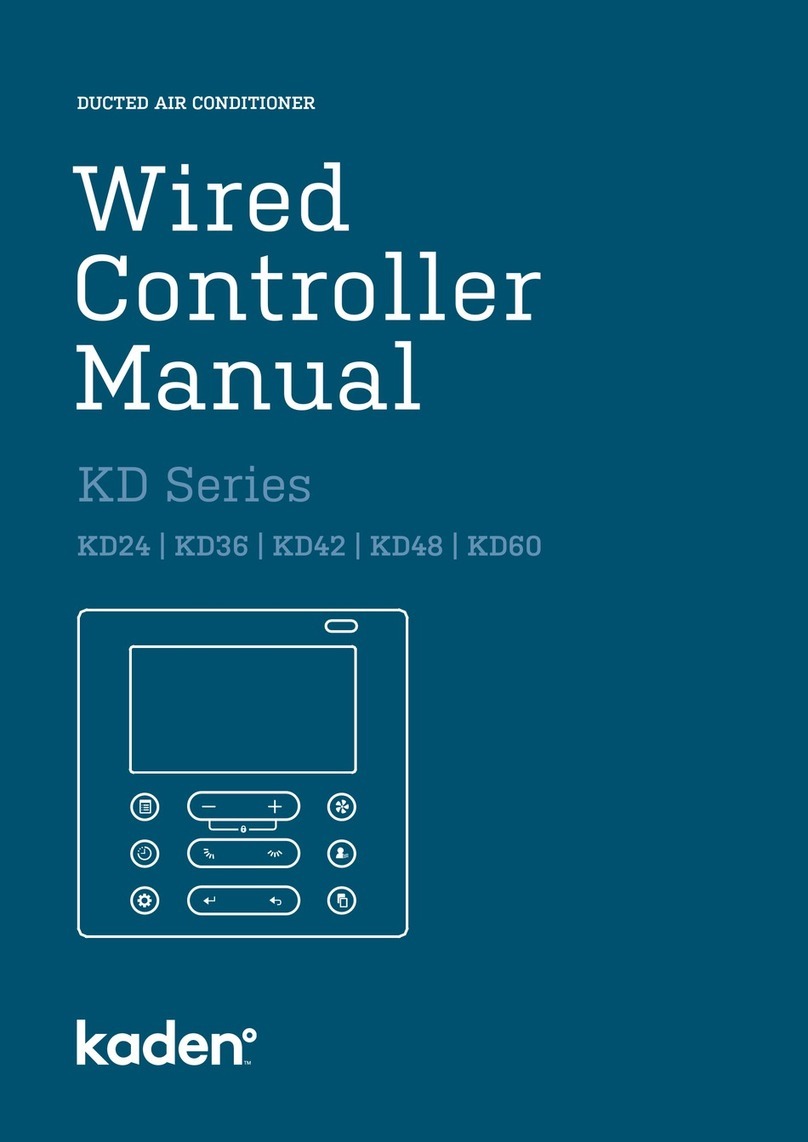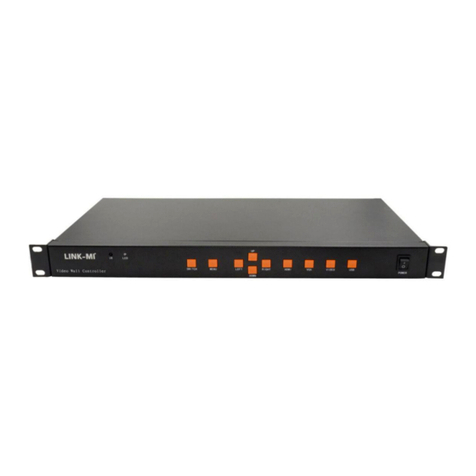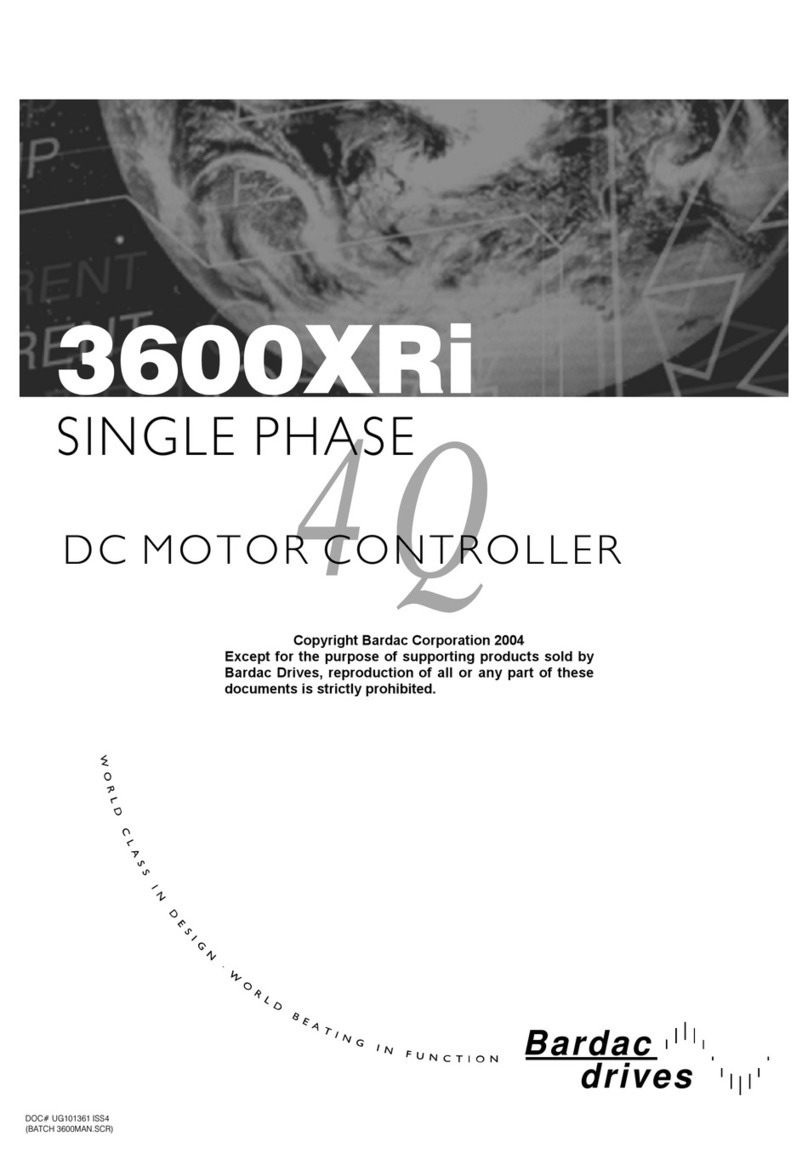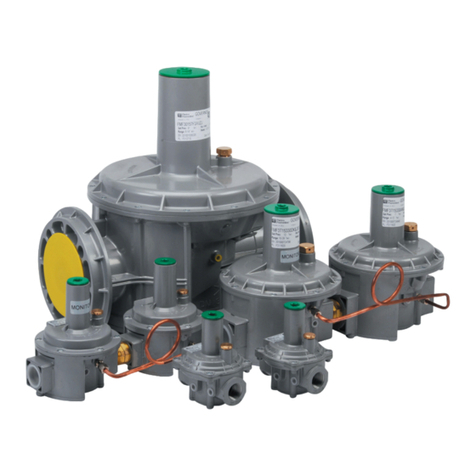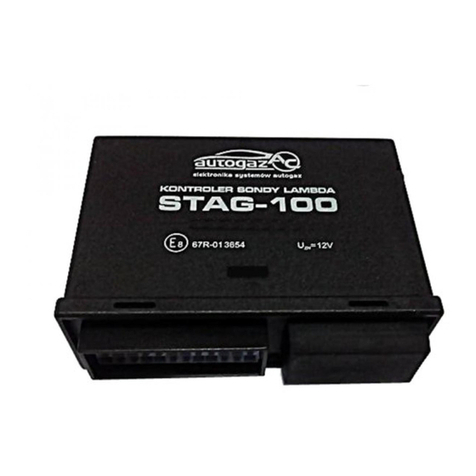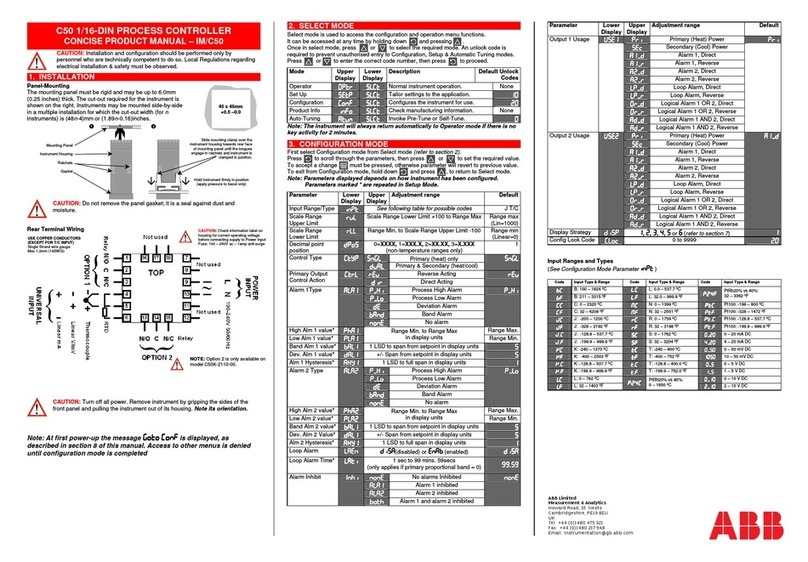JEON DG Series User manual

Instruction Manual
D103761X012
March 2021
DG Series
Direct-Operated Regulators
Manual

DG Series Regulators
2
!
WARNING
Contents
1. Introduction ......................................................... 3
2. Specifications ........................................................ 3
3. Principle of Operation................................................. 7
4. Installation .......................................................... 9
5. Overpressure Protection .............................................11
6. Operating of Pressure Reducing Regulator..............................12
7. Operating of Backpressure Regulator ..................................12
8. Maintenance........................................................13
9. Pressure Reducing Regulator Disassembly ..............................14
10. Backpressure Regulator Disassembly .................................18
11. Parts Ordering .....................................................21
12. Part List ...........................................................21
Failure to follow these instructions or to properly install and maintain this equipment could result in an explosion, fire
and/or chemical contamination causing property damage and personal injury or death. Regulators must be installed,
operated and maintained in accordance with federal, state and local codes, rules and regulations and Emerson Process
Management Regulator Technologies Inc. (Emerson) instructions. If the regulator discharges process fluid or a leak
develops in the system, service to the unit may be required. Failure to correct trouble could result in a hazardous
condition. Call a qualified service person to service the unit. Installation, operation and maintenance procedures
performed by unqualified person may result in improper adjustment and unsafe operation. Either condition may result
in equipment damage or personal injury. Only a qualified person must install or service the DG Series regulator.

DG Series Regulators
3
!
WARNING
Table 1. Body Sizes and End Connection Styles
1. Introduction
Scope of the Manual
This instruction manual provides installation, adjustment, maintenance and parts ordering information for DG Series
direct-operated Pressure Reducing Series Regulators and Backpressure Series Regulators.
Description
DG Series are multipurpose direct-operated regulators that use fluid pressure to drive the actuator and automatically
maintains the outlet pressure or inlet pressure constant. They are available in Pressure Reducing (PRV) and Backpressure (BPV)
configurations to control outlet pressure or inlet pressure respectively. They have high-capacity, fast response, tight-shutoff,
superior control and stability and can be used in a variety of industrial gas and liquid applications such as: Nitrogen, Carbon
Dioxide, Natural Gas, Oil, Water, Methanol, Alcohol, Naphtha and similar media.
2. Specifications
Body Sizes and End Connection Styles:
See Table 1
Accuracy Class:
AC5 ~AC10
Shutoff Classification per ANSI/FCI 70-3-2004:
Class VI (Soft seat)
Construction Materials:
See Table 2
Maximum Inlet, Outlet and Emergency Casing Pressure(1):
See Table 3, DG Pressure Reducing Series
See Table 4, DG Backpressure Series
Control Pressure Range(1):
See Table 5, DG Series Pressure Reducing Regulator Spring
Set Range
See Table 6, DG Series Backpressure Regulator Spring Set Range
Maximum Setpoint of Pressure Reducing Regulator(1):
Low-Pressure Actuator (DOA330): 3.0 bar / 43 psig
High-Pressure Actuator (DOA180):
Nitrile (NBR) Diaphragm: 25 bar / 363 psig
Fluorocarbon (FKM) Diaphragm: 10 bar / 145 psig
Maximum Setpoint of Backpressure Regulator(1):
Low-Pressure Actuator (DOA330): 2.3 bar / 33.4 psig
High-Pressure Actuator (DOA180):
Nitrile (NBR) Diaphragm: 25 bar / 363 psig
Fluorocarbon (FKM) Diaphragm: 10 bar / 145 psig
Maximum Differential Pressures(1):
See Table 8
Flow and Sizing Coefficients:
See Table 9, Wide Open Flow and Sizing Coefficients
Temperature Capabilities(1):
Nitrile (NBR): -29 to 80°C / -20 to 176°F
Fluorocarbon (FKM): -7 to 120°C / 19 to 248°F(2)
Pressure Registration:
External
Down Stream Control Line Connection Size:
1/4 NPT
Maximum Pressure Over Setpoint to Avoid Internal
Parts Damage(1):
Low-Pressure Actuator: 0.6 bar / 8.7 psig or
1.3 times setpoint, whichever is larger
High-Pressure Actuator: 5.7 bar / 82.6 psig
Dimension and Estimated Weight:
See Table 7
To avoid possible personal injury, equipment damage or leakage due to escaping fluid do not stand on or apply an
external load to the actuator or any part of the regulator while working around the regulator.
DG SERIES PRESSURE REDUCING REGULATOR (PRV) DG SERIES BACKPRESSURE RAGULATOR (BPV)
BODY SIZES DN 25, 50, 80, 100 / NPS 1, 2, 3, 4
BODY END FLANGE CONNECTION STYLES CL150 RF, CL300 RF, GB PN 16/25/40
1. The pressure/temperature limits in this Manual or any applicable standard limitation should not be exceeded.
2. Fluorocarbon (FKM) is limited to 93°C / 200°F in hot water.

DG Series Regulators
4
Table 2. Construction Material
PART NAME STANDARD OPTIONS
Body WCB CF8M
Diaphragm/Sealing parts NBR FKM
Sleeve 316 SST 316 SST
Sleeve Guide 316 SST 316 SST
Cage 316 SST 316 SST
Inner Spring 316 SST 316 SST
Seat 316 SST 316 SST
Stem S31803 S31803
Table 3. Maximum Inlet/Outlet and Emergency Casing Pressure(1) - DG Series PRV
BODY
MATERIAL ACTUATOR ELASTOMER
TYPE
END
CONNECTION
MEDIUM
TYPE
TEMPERATURE
RANGE
MAXIMUM INLET
PRESSURE
MAXIMUM OUTLET
PRESSURE
MAXIMUM EMERGENCY
CASING PRESSURE
bar psi bar psi bar psi
WCB
Low-pressure
Actuator
DOA330
NBR ALL Gas or Liquid -29 to 80°C
15 218 3.7 53.7 3.7 53.7
FKM ALL Gas -7 to 120°C
Liquid -7 to 93°C
High-pressure
Actuator(1)
DOA180
NBR
CL150 RF Gas or Liquid -29 to 80°C 18.3 265 18.3 265 18.3 265
CL300 RF Gas or Liquid -29 to 80°C 30 435 30 435 30 435
PN16 RF Gas or Liquid -29 to 80°C 16 232 16 232 16 232
PN25 RF Gas or Liquid -29 to 80°C 25 363 25 363 25 363
PN40 RF Gas or Liquid -29 to 80°C 30 435 30 435 30 435
FKM ALL Gas -7 to 120°C 15 218 15 218 15 218
Liquid -7 to 93°C
CF8M
Low-pressure
Actuator
DOA330
NBR
CL150/300 RF
PN25/40 RF Gas or Liquid -29 to 80°C 15 218
3.7 53.7 3.7 53.7
PN16 RF Gas or Liquid -29 to 80°C 13.2 191
FKM
CL150/300 RF
PN25/40 RF
Gas -7 to 120°C 15 218
Liquid -7 to 93°C
PN16 RF Gas -7 to 120°C 12.1 175
Liquid -7 to 93°C 12.8 186
High-pressure
Actuator(1)
DOA180
NBR
CL150 RF Gas or Liquid -29 to 80°C 17.1 248 17.1 248 17.1 248
CL300 RF Gas or Liquid -29 to 80°C 30 435 30 435 30 435
PN16 RF Gas or Liquid -29 to 80°C 13.2 191 13.2 191 13.2 191
PN25 RF Gas or Liquid -29 to 80°C 20.6 299 20.6 299 20.6 299
PN40 RF Gas or Liquid -29 to 80°C 30 435 30 435 30 435
FKM
CL150/300 RF
PN25/40 RF
Gas -7 to 120°C 15 218 15 218 15 218
Liquid -7 to 93°C
PN16 RF Gas -7 to 120°C 12.1 175 12.1 175 12.1 175
Liquid -7 to 93°C 12.8 186 12.8 186 12.8 186
1. Maximum inlet, outlet and emergency pressures for constructions with Fluorocarbon (FKM) diaphragm are limited to 15 bar / 218 psig or the body rating limit, whichever is lower.
Table 4. Maximum Inlet/Outlet and Emergency Casing Pressure(1) - DG Series BPV
BODY
MATERIAL ACTUATOR ELASTOMER
TYPE
END
CONNECTION MEDIUM TYPE TEMPERATURE
RANGE
MAXIMUM INLET
PRESSURE
MAXIMUM OUTLET
PRESSURE
MAXIMUM EMERGENCY
CASING PRESSURE
bar psi bar psi bar psi
WCB
Low-pressure
Actuator
DOA330
NBR ALL Gas or Liquid -29 to 80°C
3.7 53.7 3.7 53.7 3.7 53.7
FKM ALL Gas -7 to 120°C
Liquid -7 to 93°C
High-pressure
Actuator(1)
DOA180
NBR
CL150 RF Gas or Liquid -29 to 80°C 18.3 265 18.3 265 18.3 265
CL300 RF Gas or Liquid -29 to 80°C 30 435 30 435 30 435
PN16 RF Gas or Liquid -29 to 80°C 16 232 16 232 16 232
PN25 RF Gas or Liquid -29 to 80°C 25 363 25 363 25 363
PN40 RF Gas or Liquid -29 to 80°C 30 435 30 435 30 435
FKM ALL Gas -7 to 120°C 15 218 15 218 15 218
Liquid -7 to 93°C
CF8M
Low-pressure
Actuator
DOA330
NBR
CL150/300 RF
PN25/40 RF Gas or Liquid -29 to 80°C
3.7 53.7 3.7 53.7 3.7 53.7
PN16 RF Gas or Liquid -29 to 80°C
FKM
CL150/300 RF
PN25/40 RF
Gas -7 to 120°C
Liquid -7 to 93°C
PN16 RF Gas -7 to 120°C
Liquid -7 to 93°C
High-pressure
Actuator(1)
DOA180
NBR
CL150 RF Gas or Liquid -29 to 80°C 17.1 248 17.1 248 17.1 248
CL300 RF Gas or Liquid -29 to 80°C 30 435 30 435 30 435
PN16 RF Gas or Liquid -29 to 80°C 13.2 191 13.2 191 13.2 191
PN25 RF Gas or Liquid -29 to 80°C 20.6 299 20.6 299 20.6 299
PN40 RF Gas or Liquid -29 to 80°C 30 435 30 435 30 435
FKM
CL150/300 RF
PN25/40 RF
Gas -7 to 120°C 15 218 15 218 15 218
Liquid -7 to 93°C
PN16 RF Gas -7 to 120°C 12.1 175 12.1 175 12.1 175
Liquid -7 to 93°C 12.8 186 12.8 186 12.8 186
1. Maximum inlet, outlet and emergency pressures for constructions with Fluorocarbon (FKM) diaphragm are limited to 15 bar / 218 psig or the body rating limit, whichever is lower.

DG Series Regulators
5
Table 5. DG Series Pressure Reducing Control Ranges
ACTUATOR SPRING PART
NUMBER SPRING COLOR BODY
MATERIAL
END
CONNECTION MEDIUM TYPE BODY SIZE
ELASTOMER/
TEMPERATURE
RANGE
SPRING CONTROL RANGE
bar psig
Low-pressure
Actuator
DOA330
ERSA01273A0 White WCB or CF8M PN 16/25/40 RF
ANSI 150/300 RF Gas all NBR (-29 to 80°C) 0.15 to 0.3 2.18 to 4.35
FKM (-7 to 120°C)
ERSA01286A0 Blue WCB or CF8M PN 16/25/40 RF
ANSI 150/300 RF
Gas all NBR (-29 to 80°C) 0.27 to 0.83 3.92 to 12
FKM (-7 to 120°C)
Liquid all NBR (-29 to 80°C) 0.3 to 0.83 4.35 to 12
FKM (-7 to 93°C)
ERSA01288A0 Yellow WCB or CF8M PN 16/25/40 RF
ANSI 150/300 RF
Gas all NBR (-29 to 80°C)
0.75 to 1.77 10.9 to 25.7
FKM (-7 to 120°C)
Liquid all NBR (-29 to 80°C)
FKM (-7 to 93°C)
ERSA01290A0 Red WCB or CF8M PN 16/25/40 RF
ANSI 150/300 RF
Gas all NBR (-29 to 80°C)
1.6 to 3 23.2 to 43.5
FKM (-7 to 120°C)
Liquid all NBR (-29 to 80°C)
FKM (-7 to 93°C)
High-
pressure
Actuator(2)
DOA180
ERSA01273A0 White WCB or CF8M PN 16/25/40 RF
ANSI 150/300 RF Gas DN 25 and
DN 50(1)
NBR (-29 to 80°C) 0.75 to 2.35 10.9 to 34.1
FKM (-7 to 120°C)
ERSA01286A0 Blue WCB or CF8M PN 16/25/40 RF
ANSI 150/300 RF
Gas
DN 25 and
DN 50(1)
NBR (-29 to 80°C) 2.2 to 6 31.9 to 87
FKM (-7 to 120°C)
DN 80 and
DN 100(1)
NBR (-29 to 80°C)
2.5 to 6 36.3 to 87
FKM (-7 to 120°C)
Liquid all NBR (-29 to 80°C)
FKM (-7 to 93°C)
ERSA01288A0 Yellow
WCB PN 16 RF
Gas all NBR (-29 to 80°C) 5.5 to 13.3 79.8 to 192.8
FKM (-7 to 120°C) 5.5 to 10 79.8 to 145
Liquid all NBR (-29 to 80°C) 5.5 to 13.3 79.8 to 192.8
FKM (-7 to 93°C) 5.5 to 10 79.8 to 145
CF8M PN 16 RF
Gas all NBR (-29 to 80°C) 5.5 to 11.2 79.8 to 162.4
FKM (-7 to 120°C) 5.5 to 10 79.8 to 145
Liquid all NBR (-29 to 80°C) 5.5 to 11.2 79.8 to 162.4
FKM (-7 to 93°C) 5.5 to 10 79.8 to 145
WCB or CF8M PN 25/40 RF
ANSI 150/300 RF
Gas all NBR (-29 to 80°C) 5.5 to 14.5 79.8 to 210
FKM (-7 to 120°C) 5.5 to 10 79.8 to 145
Liquid all NBR (-29 to 80°C) 5.5 to 14.5 79.8 to 210
FKM (-7 to 93°C) 5.5 to 10 79.8 to 145
ERSA01290A0 Red
WCB
ANSI 150 RF Gas all NBR (-29 to 80°C) 13.5 to 15.3 196 to 221.8
Liquid
PN 25 RF Gas all NBR (-29 to 80°C) 13.5 to 20.8 196 to 302
Liquid
CF8M
ANSI 150 RF Gas all NBR (-29 to 80°C) 13.5 to 14.3 196 to 207
Liquid
PN 25 RF Gas all NBR (-29 to 80°C) 13.5 to 17.2 196 to 249
Liquid
WCB or CF8M PN 40 RF
ANSI 300RF
Gas all NBR (-29 to 80°C) 13.5 to 25 196 to 363
Liquid
1. No white spring option is available when the PRV body size is DN 80 / NPS 3 or DN 100 / NPS 4, the blue spring range is 2.5 to 6 bar / 36.3 to 87.0 psig.
2. The maximum control pressure for fluorocarbon (FKM) construction is 10 bar / 145 psig.

DG Series Regulators
6
Table 6. DG Series Backpressure Control Ranges
ACTUATOR SPRING PART
NUMBER
SPRING
COLOR
BODY
MATERIAL
END
CONNECTION
MEDIUM
TYPE BODY SIZE ELASTOMER/TEMPERATURE
RANGE
SPRING CONTROL RANGE
bar psig
Low-pressure
Actuator
DOA330
ERSA01273A0 White WCB or CF8M PN16/25/40 RF
ANSI 150/300 RF Gas All NBR (-29 to 80°C) 0.15 to 0.32 2.18 to 4.64
FKM (-7 to 120°C)
ERSA01286A0 Blue WCB or CF8M PN16/25/40 RF
ANSI 150/300 RF
Gas All NBR (-29 to 80°C)
0.3 to 0.7 4.35 to 10.2
FKM (-7 to 120°C)
Liquid All NBR (-29 to 80°C)
FKM (-7 to 93°C)
ERSA01288A0 Yellow WCB or CF8M PN16/25/40 RF
ANSI 150/300 RF
Gas All NBR (-29 to 80°C)
0.6 to 1.4 8.7 to 20.3
FKM (-7 to 120°C)
Liquid All NBR (-29 to 80°C)
FKM (-7 to 93°C)
ERSA01290A0 Red WCB or CF8M PN16/25/40 RF
ANSI 150/300 RF
Gas All NBR (-29 to 80°C)
1.3 to 2.3 18.9 to 33.4
FKM (-7 to 120°C)
Liquid All NBR (-29 to 80°C)
FKM (-7 to 93°C)
High-pressure
Actuator(1)
DOA180
ERSA01286A0 Blue WCB or CF8M PN16/25/40 RF
ANSI 150/300 RF
Gas
DN25 &
DN50
NBR (-29 to 80°C)
2.1 to 5 30.5 to 72.5
FKM (-7 to 120°C)
DN80 &
DN100
NBR (-29 to 80°C)
FKM (-7 to 120°C)
Liquid All NBR (-29 to 80°C)
FKM (-7 to 93°C)
ERSA01288A0 Yellow
WCB PN16 RF
Gas All NBR (-29 to 80°C)
4.5 to 10 65.3 to 145
FKM (-7 to 120°C)
Liquid All NBR (-29 to 80°C)
FKM (-7 to 93°C)
CF8M PN16 RF
Gas All NBR (-29 to 80°C)
FKM (-7 to 120°C)
Liquid All NBR (-29 to 80°C)
FKM (-7 to 93°C)
WCB or CF8M PN25/40 RF
ANSI 150/300 RF
Gas All NBR (-29 to 80°C)
FKM (-7 to 120°C)
Liquid All NBR (-29 to 80°C)
FKM (-7 to 93°C)
ERSA01290A0 Red
WCB
PN16 RF
Gas All NBR (-29 to 80°C) 9.5 to 16 138 to 232
FKM (-7 to 120°C) 9.5 to 10 138 to 145
Liquid All NBR (-29 to 80°C) 9.5 to 16 138 to 232
FKM (-7 to 93°C) 9.5 to 10 138 to 145
PN25 RF
Gas All NBR (-29 to 80°C) 9.5 to 25 138 to 363
FKM (-7 to 120°C) 9.5 to 10 138 to 145
Liquid All NBR (-29 to 80°C) 9.5 to 25 138 to 363
FKM (-7 to 93°C) 9.5 to 10 138 to 145
ANSI150 RF
Gas All NBR (-29 to 80°C) 9.5 to 18.3 138 to 265
FKM (-7 to 120°C) 9.5 to 10 138 to 145
Liquid All NBR (-29 to 80°C) 9.5 to 18.3 138 to 265
FKM (-7 to 93°C) 9.5 to 10 138 to 145
CF8M
PN16 RF
Gas All NBR (-29 to 80°C) 9.5 to 13.2 138 to 191
FKM (-7 to 120°C) 9.5 to 10 138 to 145
Liquid All NBR (-29 to 80°C) 9.5 to 13.2 138 to 191
FKM (-7 to 93°C) 9.5 to 10 138 to 145
PN25 RF
Gas All NBR (-29 to 80°C) 9.5 to 20.6 138 to 299
FKM (-7 to 120°C) 9.5 to 10 138 to 145
Liquid All NBR (-29 to 80°C) 9.5 to 20.6 138 to 299
FKM (-7 to 93°C) 9.5 to 10 138 to 145
ANSI150 RF
Gas All NBR (-29 to 80°C) 9.5 to 17.1 138 to 248
FKM (-7 to 120°C) 9.5 to 10 138 to 145
Liquid All NBR (-29 to 80°C) 9.5 to 17.1 138 to 248
FKM (-7 to 93°C) 9.5 to 10 138 to 145
WCB or CF8M PN40RF
ANSI 300RF
Gas All NBR (-29 to 80°C) 9.5 to 25 138 to 363
FKM (-7 to 120°C) 9.5 to 10 138 to 145
Liquid All NBR (-29 to 80°C) 9.5 to 25 138 to 363
FKM (-7 to 93°C) 9.5 to 10 138 to 145
1.The maximum relief pressure for fluorocarbon (FKM) construction is 13 bar / 189 psig or maximum relief pressure of corresponding body, whichever is lower. The maximum control
pressure for fluorocarbon (FKM) construction is 10 bar / 145 psig.

DG Series Regulators
7
Table 7. Dimensions and Estimated Weight
BODY DIMENSION, mm / In. WEIGHT, Kg / Lbs
A B C D E
DN NPS DOA 180 DOA 330 DOA 180 DOA 330 DOA 180 DOA 330 PN16 PN25/40 CL150 CL300 DOA 180 DOA 330 DOA 180 DOA 330
Pressure Reducing Regulator
25 1 680 / 26.8 685 / 27 580 / 22.8 585 / 23 115 / 4.53 120 / 4.72 184 / 7.24 197 / 7.76 184 / 7.24 197 / 7.76 180 / 7.09 330 / 13 29 / 63.9 38 / 83.8
50 2 707 / 27.8 712 / 28.0 591 / 23.3 596 / 23.5 127 / 5.00 132 / 5.20 254 / 10.0 267 / 10.5 254 / 10.0 267 / 10.5 180 / 7.09 330 / 13 39 / 86 48 / 105.8
80 3 753 / 29.6 758 / 29.8 609 / 24.0 614 / 24.2 145 / 5.71 150 / 5.91 298 / 11.7 317 / 12.5 298 / 11.7 317 / 12.5 180 / 7.09 330 /13 59 /130 68 /150
100 4 816 / 32.1 801 / 31.5 639 / 25.2 624 / 24.6 175 / 6.89 180 / 7.09 352 / 13.9 368 / 14.5 352 / 13.9 368 / 14.5 180 /7.09 330 /13 83 /183 91.5 / 202
Backpressure Regulator
25 1 700 / 27.6 684 / 26.9 638 / 25.1 622 / 24.5 172 / 6.77 177 / 6.97 184 / 7.24 197 / 7.76 184 / 7.24 197 / 7.76 180 / 7.09 330 / 13 29.5 / 65.0 38 / 83.8
50 2 739 / 29.1 725 / 28.5 656 / 25.8 642 / 25.3 192 / 7.56 197 / 7.76 254 / 10.0 267 / 10.5 254 / 10.0 267 / 10.5 180 / 7.09 330 / 13 40.5 / 89.3 48 / 105.8
80 3 796 / 31.3 780 / 30.7 691 / 27.2 675 / 26.6 225 / 8.86 230 / 9.10 298 / 11.7 317 / 12.5 298 / 11.7 317 / 12.5 180 / 7.09 330 / 13 59.5 / 131 68 /150
100 4 855 / 33.7 846 / 33.3 727 / 28.6 718 / 28.3 262 / 10.3 267 / 10.5 352 / 13.9 368 / 14.5 352 / 13.9 368 / 14.5 180 / 7.09 330 / 13 83.5 / 184 92 / 203
Table 8. Maximum Differential Pressure of PRV
GAS LIQUID
Ratio range of inlet pressure over setting pressure: 1.2:1~20:1
Ratio range of inlet pressure over setting pressure:
1.2:1~10:1, need to meet the following at the same time:
Differential Pressure of PRV≤ (Inlet pressure + standard atmosphere pressure) x
Recover Factor Km(Km=0.7).
Table 9. Wide-Open Flow and IEC Coefficient
BODY SIZES WIDE-OPEN FLOW COEFFICIENT VALVE RECOVERY FACTOR, Km
DN NPS CvCg
25 1 16 529 0.7
50 2 59 1797 0.7
80 3 148 4345 0.7
100 4 240 6590 0.7
DG Series PRV is a direct-operated pressure reducing regulator. When operating, fluid flows from the inlet chamber, up
through the seat ring and cage and exits the outlet chamber. Downstream pressure is registered at the underside of the
diaphragm through an external sensing line that is connected to the lower diaphragm casing. The pressure under the actuator
diaphragm is balanced by the spring force acting at the topside of the diaphragm, through the action of the actuator stem,
the valve plug moves to or away from the seat ring to achieve pressure reducing and retaining. Downstream pressure is set by
turning the adjusting screw.
When downstream flow demand decreases, downstream pressure increases and the pressure registered under the actuator
diaphragm also increases. Spring force moves the diaphragm upward and the valve stem together with the valve plug move
towards the seat ring, decreasing fluid flow and downstream pressure is maintained at a new equilibrium state.
When downstream flow demand increases, downstream pressure decreases and the pressure registered under the actuator
diaphragm also decreases. Spring force now moves the diaphragm downward and the valve stem together with the valve plug
move away from seat ring, increasing fluid flow and downstream pressure is maintained at a new equilibrium state.
DG Series BPV is a direct-operated backpressure regulator. When operating, fluid flows from the inlet chamber through the
seat ring and cage and exits on the outlet chamber. Inlet pressure is registered at the underside of the diaphragm through an
external sensing line that is connected to the lower diaphragm casing. The pressure under the actuator diaphragm is balanced
by the spring force acting at the topside of the diaphragm. Through the action of the actuator stem, the valve plug moves to
or away from the seat ring to achieve pressure retaining. Upstream pressure is set by turning the adjusting screw.
When the inlet pressure is above the set pressure, the pressure registered at the actuator diaphragm increases. Spring force
moves the diaphragm upward and the valve stem together with the valve plug move away from seat ring, increasing fluid flow
and then it opens the backpressure regulator. Inlet pressure is maintained at a new equilibrium state.
When the inlet pressure is below the set pressure, the pressure registered at the actuator diaphragm decreases. Spring force
now moves the diaphragm downward and the valve stem together with the valve plug move towards the seat ring, decreasing
fluid flow and then it closes the backpressure regulator. Inlet pressure is maintained at a new equilibrium state.
3. Principle of Operation

INLET PRESSURE
OUTLET PRESSURE
ATMOSPHERIC PRESSURE
FIRST STAGE
REGULATOR
INLET PRESSURE
OUTLET PRESSURE
ATMOSPHERIC PRESSURE
INTERMEDIATE PRESSURE
INLET PRESSURE
OUTLET PRESSURE
ATMOSPHERIC PRESSURE
FIRST STAGE
REGULATOR
INLET PRESSURE
OUTLET PRESSURE
ATMOSPHERIC PRESSURE
INTERMEDIATE PRESSURE
DG Series Regulators
8
ADJUSTING SCREW
SPRING CASE
CONTROL SPRING
SENSING LINE
DIAPHRAGM
TRIM PARTS
BODY
OUTLETINLET
INLET PRESSURE
OUTLET PRESSURE
ATMOSPHERIC PRESSURE
Figure 1. Operational Schematic of DG Series PRV
Figure 2. Operational Schematic of DG Series BPV
ADJUSTING SCREW
CONTROL SPRING
DIAPHRAGM
SENSING LINE
BODY
TRIM PARTS
SPRING CASE
VALVE SPRING
OUTLETINLET
INLET PRESSURE
OUTLET PRESSURE
ATMOSPHERIC PRESSURE

DG Series Regulators
9
!
WARNING
!
WARNING
4. Installation
Personal injury or system damage may result if this regulator is installed, without appropriate overpressure
protection, where service conditions could exceed the limits given in the Specifications section and/or regulator
nameplate. Refer to Overpressure Protection section for recommendations on how to prevent service conditions from
exceeding those limits.
Additionally, physical damage to the regulator may result in personal injury or property damage due to escaping of
accumulated gas. To avoid such injury and damage, install the regulator in a safe location.
All vents should be kept open to permit free flow of gas to the atmosphere. Protect openings against entrance of rain,
snow, insects or any other foreign material that may plug the vent or vent line. Under enclosed conditions or indoors,
escaping gas may accumulate and be an explosion hazard. In these cases, the vent should be piped away from the
regulator to the outdoors.
General Installation Instructions
Installation of Pressure Reducing Regulator
Installing, operating and maintaining PRV should be performed by qualified personnel.
1. Before installing PRV:
• Check for damage which might have occurred during shipment.
• Inspect regulator body inlet and outlet ports and remove any dirt or foreign material that may be present.
• Blow out any debris or dirt in the tubing and the pipeline
• Check if the pressure in the pipeline is within the pressure range stated on the regulator nameplate.
• Make sure fluid flow through the regulator is in the same direction as the arrow on the body.
2. Install PRV away from fire source, vibration, water accumulation and ice formation areas and the environment
temperature should comply with the requirements. In low temperature areas, heat tracing measures may be considered
to heat the pipelines of the PRV in winter. At special occasions, such as installations in areas with heavy snow, may require
a hood or enclosure to protect the PRV from snow load and vent freeze over.
3. Body installed vertically with the actuator spring case pointing upward is required.
4. Do not forcefully install the regulator when connecting the inlet and outlet pipelines.
5. If a quick exhausting device or valve is to be installed downstream of the PRV, make sure to leave enough gas piping
volume between the PRV and the device to avoid sharp pressure drop due to rapid changing flow rates.
6. The filter should be installed on the upstream of the PRV and leave enough straight run of pipe downstream. Attach
a 14 mm / 0.55 in. OD sensing line with a 1/4 NPT fitting no less than 5 x DN (the nominal diameter of the pipework)
away from the PRV outlet port and at a point away from any source of turbulence and no less than 5 x DN (the nominal
diameter of the pipework) away from downstream block valve. When outlet pressure is at or above 0.5 bar / 7.25 psig,
gas velocity should not exceed 50 m/s. When outlet pressure is below 0.5 bar / 7.25 psig, gas velocity should not exceed
25 m/s. The nominal diameter of the pipework connecting the regulator shall not be smaller than the nominal diameter
of the regulator.
Note: Uninstall/Replacing any of the parts (Ex. Adjusting Screw, Spring etc.) is forbidden when the internal pressure of
regulator is not vent completely.
Note: Contact appropriate Emerson representative prior to removing or modifying restrictor (if used) in sense line.
Improper adjustment to restrictor can lead to instability in pressure reducing regulator.
Remove or isolate (utilizing blind flange) the regulator when the pipeline is undergoing pressure test or purging to avoid
damaging the regulator.

INLET PRESSURE
OUTLET PRESSURE
ATMOSPHERIC PRESSURE
FIRST STAGE
REGULATOR
INLET PRESSURE
OUTLET PRESSURE
ATMOSPHERIC PRESSURE
INTERMEDIATE PRESSURE
INLET PRESSURE
OUTLET PRESSURE
ATMOSPHERIC PRESSURE
FIRST STAGE
REGULATOR
INLET PRESSURE
OUTLET PRESSURE
ATMOSPHERIC PRESSURE
INTERMEDIATE PRESSURE
DG Series Regulators
10
Note: Optional Damper and Restrictor are available for various applications.
Figure 3. Installation Schematic for DG Series PRV
≥ DN 5 ≥ DN 5
≥ DN 10
FILTER UPSTREAM
BLOCK VALVE
PRESSURE
GAUGE DOWNSTREAM
BLOCK VALVE
INLET PRESSURE
OUTLET PRESSURE
ATMOSPHERIC PRESSURE
Figure 4. Installation Schematic for DG Series BPV
Note: Optional Damper and Restrictor are available for various applications.
≥ DN 5
≥ DN 5
FILTER UPSTREAM
BLOCK VALVE
PRESSURE
GAUGE DOWNSTREAM
BLOCK VALVE
INLET PRESSURE
OUTLET PRESSURE
ATMOSPHERIC PRESSURE

DG Series Regulators
11
!
WARNING
!
WARNING
DG Series Pressure Reducing Regulator (PRV)
DG Series pressure regulator have an outlet pressure rating lower than the inlet pressure rating. The recommended pressure
limitations are stamped on the regulator nameplate. Some type of overpressure protection is needed if the actual inlet
pressure can exceed the maximum operating outlet pressure rating. Over-pressuring any portion of the regulators beyond the
limits in the Specifications section may cause leakage, damage to regulator parts or personal injury due to bursting of pressure
containing parts.
Provide an external overpressure protection if inlet pressure will be high enough to damage downstream equipment.
Common methods of external overpressure protection include relief valves, monitoring regulators, shut-off devices and
series regulation.
Installation of Backpressure Regulator
Installing, operating and maintaining BPV should be performed by qualified personnel.
1. Before installing BPV:
• Check for damage which might have occurred during shipment.
• Inspect regulator body inlet and outlet ports and remove any dirt or foreign material that may be present.
• Blow out any debris or dirt in the tubing and the pipeline.
• Check if the pressure in the pipeline is within the pressure range stated on the regulator nameplate.
• Make sure fluid flow through the regulator is in the same direction as the arrow on the body.
2. Install BPV away from fire source, vibration, water accumulation and ice formation areas and the environment
temperature should comply with the requirements. In low temperature areas, heat tracing measures may be considered
to heat the pipelines of the BPV in winter. At special occasions, such as installations in areas with heavy snow, may require
a hood or enclosure to protect the BPV from snow load and vent freeze over.
3. Body installed horizontally with the actuator spring case pointing upward is required.
4. Do not forcefully install the regulator when connecting the inlet and outlet pipelines.
5. If a quick exhausting device or valve is to be installed downstream of the BPV, make sure to leave enough gas piping
volume between the BPV and the device to avoid sharp pressure drop due to rapid changing flow rates.
6. The filter should be installed on the upstream of the BPV and leave enough straight run of pipe upstream. Attach a
14 mm / 0.55 in. OD sensing line with a 1/4 NPT fitting no less than 5 x DN (the nominal diameter of the pipework) away
from the BPV on the upstream and at a point away from any source of turbulence and no less than 5 x DN (the nominal
diameter of the pipework) away from the upstream block valve. The nominal diameter of the pipework connecting the
regulator shall not be smaller than the nominal diameter of the regulator.
Note: Uninstall/Replacing any of the parts (Ex. Adjusting Screw, Spring etc.) is forbidden when the internal pressure of
regulator is not vent completely.
Note: Contact appropriate Emerson representative prior to removing or modifying restrictor (if used) in sense line.
Improper adjustment to restrictor can lead to instability in pressure reducing regulator.
Remove or isolate (utilizing blind flange) the regulator when the pipeline is undergoing pressure test or purging to avoid
damaging the regulator.
5. Overpressure Protection
Personal injury, equipment damage or leakage due to escaping accumulated gas or bursting of pressure-containing
parts may result if this regulator is:
• Over-pressured;
• Used with incompatible process fluid;
• Installed where service conditions could exceed the limits given in the specifications section and on the
appropriate nameplate; or
• Where conditions exceed any ratings of adjacent piping or piping connections.
To avoid such injury or damage, provide pressure-relieving or pressure-limiting devices to prevent service conditions
from exceeding those limits.

DG Series Regulators
12
!
WARNING
If the regulator is exposed to an overpressure condition, it should be inspected for any damage that may have occurred.
Regulator operation below the limits specified in the Specifications section and regulator nameplate does not preclude the
possibility of damage from external sources or from debris in the pipeline.
DG Series Backpressure Regulator (BPV)
Over-pressuring any portion of this equipment may result in equipment damage, leaks in the backpressure regulator or
personal injury due to bursting of pressure-containing parts. The system should be inspected after any overpressure condition.
The individual spring range of your backpressure regulator is stamped on the nameplate. Maximum inlet pressures depend
upon body materials and temperatures. See the Specifications section for the maximum inlet pressure of the valve. The valve
should be inspected for damage after any overpressure condition.
6. Operating of Pressure Reducing Regulator
To avoid possible personal injury, equipment damage or leakage due to escaping fluid, make certain the regulator is
installed as instructed in the Installation section.
Note: Pressure gauges must always be used to monitor downstream pressure during Startup.
Startup
1. Make sure bypass valve is closed. Open the system shutoff valve.
2. Slowly open the inlet block valve in front of the PRV.
3. Slightly open the outlet block valve behind the PRV.
4. When used in liquid service, the PRV has bleed design to exhaust the air (Figure 3) trapped under the actuator diaphragm
depending on medium type. Slowly unscrew the bleed plug to exhaust the air. Then, screw and tighten the plug.
Exercise caution always.
5. Keep in this position until pressure is stabilized.
6. Fully open the outlet block valve.
Note: The regulator is factory-set as specified on the order or at the midpoint of the spring range. The allowable spring range is
stamped on the nameplate. If a pressure setting other than the one specified is desired, be sure to change the pressure setting
by following the Adjustment procedure.
Pressure Adjustment
To change the outlet pressure, unscrew the jam nut and slowly turn the adjusting screw and set the outlet pressure to
the desired setting, screw the jam nut. Clockwise to increase the setting pressure. Counterclockwise to decrease the
setting pressure.
Shutdown
1. Close the inlet block valve.
2. Close the outlet block valve.
Note: To avoid internal damage due to reverse pressurization of main valve components, make certain pressure reducing
regulator outlet pressure is bled prior to inlet pressure.
3. Slowly open the outlet block valve to release downstream pressure.
4. Keep the outlet block valve open, release inlet pressure and all remaining pressure in PRV.
7. Operating of Backpressure Regulator
Startup
1. Make sure bypass valve is closed, open the system shutoff valve.
2. Slowly open the outlet block valve behind the BPV.
3. Slowly open the inlet block valve in front of the BPV
4. When used in liquid service, the BPV has bleed design (Figure 4) to exhaust the air trapped under the actuator diaphragm
depending on medium type. Slowly unscrew the bleed plug to exhaust the air. Then, screw and tighten the plug. Exercise
caution always.
Note: The regulator is factory-set as specified on the order or at the midpoint of the spring range. The allowable spring range is
stamped on the nameplate. If a pressure setting other than the one specified is desired, be sure to change the pressure setting
by following the Adjustment procedure.

DG Series Regulators
13
Figure 5. Diaphragm Case Figure 6. Spring Case
PLUG
ADJUSTING SCREW
VENT HOLE
LIQUID OPTION ONLY
!
WARNING
Pressure Adjustment
To change the inlet pressure, unscrew the jam nut and slowly turn the adjusting screw (Figure 6) and set the inlet pressure to the
desired setting, screw the jam nut. Clockwise to increase the inlet pressure. Counterclockwise to decrease the inlet pressure.
Shutdown
1. Close the upstream BPV inlet block valve.
2. Close the downstream BPV outlet block valve.
Note: To avoid internal damage due to reverse pressurization of main valve components, make certain pressure reducing
regulator outlet pressure is bled prior to inlet pressure.
3. Slowly open the outlet block valve to release downstream pressure.
4. Keep the outlet block valve open, release inlet pressure and the remaining pressure in BPV.
8. Maintenance
Personal injury, equipment damage or leakage due to escaping fluid may result if seals are not properly lubricated
or maintained. Due to normal part wear or damage that may occur from external sources, this regulator should be
inspected and maintained periodically. The frequency of inspection, maintenance and replacement of parts depend
upon the severity of service conditions or the requirements of local, state and federal regulations.
Regulators that have been disassembled for repair must be tested for proper operation before being returned to
service. Only parts manufactured by Emerson should be used for repairing Emerson regulators. Restart gas utilization
equipment according to normal start-up procedures.
Note: To protect against reduced performance, make certain vents are not plugged when conducting routine maintenance.
Before maintenance, close the inlet and outlet block valves and exhaust the gas pressure in the valve body and piping. When
removing or replacing parts such as the orifice or diaphragm, be careful not to damage them. Ensure movable parts can move
freely after reassembly. Recommission according to the Installation and Startup procedures. Ensure all connections are tight
and check for leaks. Emerson provides training for your maintenance personnel. For other information, consult your local
Sales Office.
Routine Maintenance
The frequency of routine maintenance should be given by end user’s management department depend on the medium type
and service condition to keep safety:
1. Make sure that there is no leakage on the regulator.
2. Observe the gauges to make sure that the pressure being controlled is sTable and at the correct set point.
3. Clean the outside of the regulator.

DG Series Regulators
14
CAUTION
All disassembly, trim change and reassembly steps in this section may be performed with the regulator in the main line.
The trim for the DN 80 and 100 / NPS 3 and 4 body sizes are heavy and may be awkward to remove or reinstall in some
valve/ pipeline orientations. Follow your company policy for lifting and handling heavy parts.
!
WARNING
To avoid possible personal injury from spring or pressure-loaded actuator, make certain the adjusting screw is
completely backed off or the spring case pressure is vented prior to disassembly. Otherwise, the spring load or loading
pressure could forcefully eject the spring case.
!
WARNING
Periodic Check
The frequency of periodic check should be given by end user’s management department depend on the medium type and
service condition to make sure the proper functioning of the regulator. Apart from monitoring the set pressure:
1. Check DG Series PRV lock up pressure every 1 to 3 months: Open the upstream valve, using the downstream pressure
gauge to monitor the pressure, slowly close the downstream valve, ensure that the downstream pressure does
not increase.
2. Check DG Series BPV lock up pressure every 1 to 3 months: Slowly increase the inlet pressure until the relieving pressure
starts to rise, then slowly decrease the inlet pressure until the valve closed, ensure the downstream pressure does
not increase.
3. Clean internal parts every 3 to 6 months like the Disk, Diaphragm, O-rings and Seat Ring. Give due diligence to check and
replace deformed and worn out seals upon necessary.
4. Check wear parts every 3to 6 months for damage and replace upon necessary, replace crush installed O-rings
after disassembly.
Replacing Nameplate
Be certain that the nameplates are updated to accurately indicate any field changes in equipment, materials, service conditions
or pressure settings.
9. Pressure Reducing Regulator Disassembly
To avoid personal injury resulting from sudden release of pressure, isolate the regulator from all pressure and
cautiously release trapped pressure from the regulator before attempting disassembly.
Failure to properly follow maintenance installation procedures when replacing parts could result in regulator damage,
personal injury and property damage from escaping process fluid or regulators separation during testing or after
reinstallation in the pipe line.
All O-rings, gaskets and seals should be lubricated with a good grade of general-purpose lubricant and installed gently rather
than forced into position. Refer to Table 10 for torque specifications. Refer to Figures 6, 8 and 9 while servicing Type DG
pressure reducing regulators.
Actuator Maintenance
Perform this procedure if it is desired to inspect or replace the diaphragm or other internal parts or if it is desired to change the
outlet pressure range of the regulator by changing the control spring.
If only maintenance and checking for non-trim parts under the regulator main-valve is needed, please go to step 18.
Replacing Main Valve Spring
1. Loosing Lock Nut (key 52), slowly loosing Adjusting Screw (key 53) and remove it from the Case Cover (key 51).
2. Slowly loosing Case Cover (key 51) and remove it from the Spring Case (key 49 for Low-Pressure Actuator, key 44 for
High-Pressure Actuator).
3. Remove Upper Spring Seat (key 50) and the Control Spring (key 48), replace the control spring if needed. If no other
maintenance work needed in the actuator and internal parts, please go to step 44.
4. If further maintenance needed, for Low-Pressure Actuator please go to step 5, For High-Pressure Actuator please go
to step 13.

DG Series Regulators
15
Table 10. DG Series Pressure Reducing Regulator Assembly Torque
PART NAME TORQUE (N•m)
1 In. 2 In. 3 In. 4 In.
Bolts (key 16), M8×25 25 to 30
Bolts (key 42), M8×25 Nuts (key 40), M8 28 to 32
Bolts (key 7) 26 to 36 60 to 75 54 to 74 94 to 128
Bolts (key 45), M8×15 25 to 30
Bolts (key 58), M12×45 Nuts (key 57), M12 61 to 74
Thin Nut (key 34), M10 16 to 19
Nut (key 60), M10 21 to 24
Locknut (key 29), M10 21 to 24
Plug (ERSA01628, key 5) 100 to 132
Replacing Low-Pressure Actuator Diaphragm
5. Slowly screw out and remove the Spring Case (key 49), loosen the Nut (key 40), remove the Washer (key 41) and Bolt
(key 42), Remove the Upper Casing (key 43) and Base (key 47) carefully.
6. Loosen Nut (key 45) and disassemble Base (key 47), remove and check O-ring (key 46), if necessary replace with new
spare parts.
7. Carefully loosen Lock Nut (key 60) and Thin Nut (key 34) in the middle of diaphragm. Remove Lower Spring Seat (key 37).
Remove Upper diaphragm plate (key 38) and Pin (key 66).
8. Taking out the Diaphragm (key 39) carefully, check if there is any damage or ageing. If needed, replace it with new
spare parts.
9. Take out the Diaphragm Head (key 36) carefully, check the O-ring (key 68) in the groove of Diaphragm Head (key 36),
replace it with new spare part if needed. If no further maintenance in trim parts or connection parts of actuator and body,
please go to step 34.
10. Loosen Bolt (key 16), Remove the Washer (key 17), taken out the Lower Casing Plate (key 35) slowly, remove the actuator
Lower Casing (key 33) from the main valve assemble carefully. Check the O-ring (key 63) and replace it with new spare
parts if needed.
11. Loosen the Bolt (key 64) with tools, take out the Washer (key 17), remove out the Connector Pad (key 62) slowly from the
Stem (key 18). Check the Bushing (key 25) and O-ring (key 15) if damaged, replace with new spare part if needed. If no
further maintenance of internal parts needed, please go to step 32.
12. If further internal parts maintenance is needed, please go to step 18.
Replacing High-Pressure Actuator Diaphragm
13. Slowly screw out and remove the Spring Case (key 44), loosen Nut (key 57), remove Washer (key 8) and Bolt (key 58),
Carefully remove Upper Casing (key 59).
14. Carefully loosen the Lock Nut (key 60) and Thin Nut (key 34) in the middle of diaphragm, take out the Lower Spring Seat
(key 37); Remove the Diaphragm Plate (key 55) and Pin (key 66).
15. Taken out the Diaphragm (key 56) Carefully, check if there is any damage or ageing. If needed, replace it with new
spare parts.
16. Remove the Diaphragm Head (key 36) carefully, check the O-ring (key 68) in the groove of Diaphragm Head, replace it
with new spare part if needed. If no further maintenance in trim parts or connection parts of actuator and body, please go
to step 40.
17. Loosen Bolt (key 16), remove Washer (key 17), remove the Lower Casing (key 54) from the main-valve assemble carefully.
Check the O-ring (key 15), replace it with new spare part if needed. If no further maintenance of internal parts needed,
please go to step 39.
Replacing Trim Parts
Perform this procedure when inspecting, cleaning or replacing individual internal trim parts.
18. Remove Plug (key 5), check the O-ring (key 6) in the groove of plug. Replace it with new spare part if needed.
19. Carefully remove the Nut (key 7) and Washer (key 9). Please avoid dropping internal parts, remove the body flange (key 2)
carefully, check the O-ring (key 3) in the contact corner of body and body flange and the O-ring (key 4) in the outer
groove of Sleeve Guide (key 10). Replace it with new spare part if needed. If no further maintenance of internal parts nee,
please go to step 30.
20. Slowly slide the Sleeve /Stem assemble out of the Sleeve Guide (key 10), Take out the Sleeve Guide (key 10) and Cage
(key 13), Check the O-ring (key 12) and Sliding (key 11) in the inner groove of the Sleeve Guide (key 10). Replace it with
new spare part if needed. If no maintenance of the Seat (key 19) needed, please go to step 27.
21. Loose the Seat (key 19) using suiTable tools and remove slowly and check the O-ring (key 14) in the contact area of Seat
(key 19) and Body (key 1), replace it with new spare parts if needed.
22. In the Sleeve/Stem assemble, Loosen Nut (key 29), Take out Washer (key 28) and Plate/Gasket (key 27), check the O-ring
(key 26), replace it with new spare part if needed.
23. Take out the Stem Bushing (key 22) from the body (key 1), check the O-ring (key 24, key 23) and Bushing (key 25), replace
it with new spare part if needed.

DG Series Regulators
16
!
WARNING
!
WARNING
!
WARNING
Personal injury, equipment damage or leakage due to escaping fluid may result if regulator bolts are not tightened to
proper load. Always tighten bolts in an alternating pattern.
Personal injury, equipment damage or leakage due to escaping fluid may result if regulator bolts are not tightened to
proper load. Always tighten bolts in an alternating pattern.
Personal injury, equipment damage or leakage due to escaping fluid may result if regulator bolts are not tightened to
proper load. Always tighten bolts in an alternating pattern.
Reassemble of the Pressure Reducing Regulator
Make sure all the parts which needed to be maintenance are properly handled or replaced, then perform the following procedure:
24. Lubricate the O-ring (key 26), And assemble it onto the groove of the Plate/Gasket (key 27), add the Washer (key 28) and
tighten the Nut (key 29) using torque values listed in Table 10.
25. Lightly lubricate the O-ring (key 23) and Bushing (key 25), assemble it on the inner groove of the Stem Bushing (key 22).
Lubricate the O-ring (key 24) and assemble it onto the outer groove of the Stem Bushing (key 22). Press the Stem Bushing
assemble into the stage hole on the top of Body (key 1) slowly until it reaches the stopping point.
26. Clean and purge the inner surface of the body, lubricate the O-ring (key 14) and put it on the corner of the mating faces of
the body and Seat. Put the Seat (key 19) on the inner stage of the Body (key 1), please make sure the O-ring (key 14) are
not damaged.
27. Assemble the Cage (key 13) onto the groove of the Seat (key 19).
28. Lubricate the O-ring (key 12) and Sliding (key 11), assemble them onto the inner groove of the Sleeve Guide (key 10) and
carefully put the Stem/Sleeve assemble in step 24 into the Sleeve Guide (key 10).
29. Put the Stem/Sleeve/Sleeve Guide assemble onto the stage of the Cage. And let the Stem (key 18) go through the hole of
Body (key 1), Please make sure there is no damage or scratch of the Stem during the process.
30. Lubricate the O-ring (key 4) and assemble it onto the outer groove of the Sleeve Guide (key 10); Lubricate the O-ring
(key 3) and put it onto the stage corner of the Body (key 1). Assemble the Bonnet (key 2) onto the body (key 1), please
make sure all the bolting holes are aligned. Lubricate the screw of the Bolt (key 7), connect the Bonnet and Body using
Bolt (key 7) and Washer (key 9), tighten the bolt in an alternating pattern using the torque listed in Table 10.
31. Lubricate the O-ring (key 6) and assemble it onto the Plug (key 5), Screw the Plug (key 5) into the hole of Bonnet (key 2)
carefully, using the torque values listed in Table 10.
If no maintenance of the internal parts, actuator and Control Spring, then the reassemble procedure ends here.
For the assemble procedure of Low-Pressure Actuator, please go to step 32.
For the assemble procedure of High-Pressure Actuator, please go to step 39.
32. Lubricate the O-ring (key 15), assemble it onto the outer groove of the Body (key 1); (For DN100/NPS 4 please skip the
following procedures in this step and go to step 33 directly), Lubricate the Bushing (key 25) and press it into the hole on
the protrusion part of the Connector Pad (key 62); Let the Connector Pad (key 62) go through the Stem carefully and
assemble it onto the Body (key 1) carefully. Make sure all the bolt holes are aligned. Connect the Connector Pad (key 62)
and Body (key 1) using the Bolt (key 64) and Washer (key 17), tighten the Bolt (key 64) in an alternating pattern using the
torque value listed in Table 10. Lubricate the O-ring (key 63) and put it onto the groove of Connector Pad.
33. Put the actuator Lower Casing (key 33) onto the Connector Pad Carefully. Make sure the bolt holes are aligned and check
the direction of the signal connection port. Put the Lower Casing Plate (key 35) onto the Lower Casing (key 33) and make
sure the bolt holes are aligned. Lubricate the Screw of Bolt (key 16), Fix the Lower Casing (key 33) and Lower Casing Plate
(key 35) onto the Connector Pad (key 62) using the Bolt (key 16) and Washer (key 17). Tighten the bolt with the torque
listed in Table 10.
34. Lubricate the O-ring (key 68) and assemble it onto the inner groove of Diaphragm Head (key 36); Let the Stem (key 18) go
through the Diaphragm Head (key 36), Press the Diaphragm Head (key 36) until it reaches the Lower Plate (key 35).

DG Series Regulators
17
!
WARNING
Personal injury, equipment damage or leakage due to escaping fluid may result if regulator bolts are not tightened to
proper load. Always tighten bolts in an alternating pattern.
35. Lubricate the flange facing of Lower Casing (key 33) and the groove sealing face of Diaphragm Head (key 36), assemble
the Diaphragm (key 39) onto the lower plate carefully. Make sure the pin holes on lower plate and diaphragm are aligned
and make sure the bolts holes on diaphragm and bolts holes on flange faces are aligned. Assemble the Pin (key 66) into
the pin hole carefully. Lubricate the groove sealing side of the Diaphragm Upper Plate (key 38), let it go through the Stem
(key 18), align the pin hole side to the Pin (key 66) and assemble it onto the upper side of Diaphragm (key 39). Assemble
the Lower Spring Seat (key 37) onto the upper side of Diaphragm Upper Plate (key 38). Lubricate the Screw at the end of
Stem (key 18), Tight the Thin Nut (key 34) and Nut (key 60) using the torque value listed in Table 10.
36. Lubricate O-ring (key 46) and put it onto the groove of the Base (key 47), lubricate the screw of Bolt (key 45). Fix the Base
(key 47) onto Upper Casing (key 43) using the Bolt (key 45).
37. Lubricate the flange face of Upper Casing (key 43), Assemble the Upper Casing/Base Assemble on to the diaphragm
(key 39) carefully, make sure the bolts holes are aligned. Lubricate the screw of Bolt (key 42), connecting the Upper and
Lower Casing using the Bolt (key 42), Nut (key 40) and Washer (key 41). Tight the bolts in an alternating pattern using the
torque value listed in Table 10.
Note: Exercise care to ensure that the diaphragm (key 39) is not pinched, twisted or wrinkled while compressing between the
upper and lower diaphragm casings (keys 43 and 33).
38. Lubricate the screw on the end of Spring Case (key 49) which side has no bleed hole. And Screw it into the Base (key 47).
Then go to step 44.
39. Lubricate O-ring (key 15) and assemble it onto groove at the end of the Body (key 1); put the actuator Lower Casing
(key 54) onto the body (key 1) carefully, make sure all the bolting holes are aligned and check the direction of the signal
connection port; lubricate the screw of the Bolt (key 16), fix the Lower Casing (key 54) onto the Body (key 1) using Bolt
(key 16) and Washer (key 17). Tight it with the torque value listed in Table 10.
40. Lubricate O-ring (key 68) and assemble it onto the inner groove of Diaphragm Head (key 36); Let the Stem (key 18) go
through the Diaphragm Head (key 36) and press the Diaphragm Head (key 36) until it reaches the Lower Casing (key 54).
41. Lubricate the flange face of Lower Casing (key 54) and the sealing groove face of Diaphragm Head (key 36), assemble
the Diaphragm (key 56) onto the lower plate carefully. Make sure the pin holes on lower plate and diaphragm are aligned
and make sure the bolts holes on diaphragm and bolts holes on flange faces are aligned. Assemble the Pin (key 66) into
the Pin hole carefully. Lubricate the groove sealing side of the Diaphragm Upper Plate (key 55), Let it go through Stem
(key 18), align the pin hole to the Pin (key 66) and assemble it onto the upper side of the Diaphragm (key 56). Assemble
the Lower Spring Seat (key 37) onto the upper side of the upper plate (key 55). Lubricate the screw on the top of the Stem
(key 18), tight it using the Thin Nut (key 34) and Nut (key 60) with the torque value listed in Table 10.
42. Lubricate the flange face of Upper Casing (key 59), assemble it onto the Diaphragm (key 56) carefully, make sure the
Bolt holes are aligned. Lubricate the screw of the Bolt (key 58), connect the Upper / Lower Casing using Bolt (key 58), nut
(key 57) and Washer (key 8). Tight it in an alternating pattern using the torque value listed in Table 10.
Note: Exercise care to ensure that the diaphragm (key 56) is not pinched, twisted or wrinkled while compressing between the
upper and lower diaphragm casings (keys 59 and 54).
43. Lubricate the screw on the end of Spring Case (key 49) which side has no bleed hole. And Screw it into the screw of Upper
Casing (key 59).
44. Coat the two ends of Control Spring (key 48) with grease and put it correctly inside the Spring Case (key 49). Coat the
raised face of Upper Spring Seat (key 50) with grease and put it onto the top end of spring.
45. Coat the screw on Adjusting Screw (key 53) with grease, slowly screw in Lock Nut (key 52) and then screw in the Adjusting
Screw (key 53) into the threaded hole of Case Cover (key 51).
46. Lubricate the screw on the top of Spring Case (key 49), Screw in the Case Cover assemble into the top of Spring Case
(key 49) slowly and then screw in Adjusting Screw (key 53) to a proper position.

DG Series Regulators
18
CAUTION
!
WARNING
!
WARNING
10. Backpressure Regulator Disassembly
To avoid personal injury resulting from sudden release of pressure, isolate the regulator from all pressure and
cautiously release trapped pressure from the regulator before attempting disassembly.
Failure to properly follow maintenance installation procedures when replacing parts could result in regulator damage,
personal injury and property damage from escaping process fluid or regulators separation during testing or after
reinstallation in the pipe line.
All disassembly, trim change and reassembly steps in this section may be performed with the regulator in the main line.
The trim for the DN 80 and 100 / NPS 3 and 4 body sizes are heavy and may be awkward to remove or reinstall in some
valve/ pipeline orientations. Follow your company policy for lifting and handling heavy parts.
To avoid possible personal injury from spring or pressure-loaded actuator, make certain the adjusting screw is
completely backed off or the spring case pressure is vented prior to disassembly. Otherwise, the spring load or loading
pressure could forcefully eject the spring case.
Table 11. DG Series Backpressure Regulator Assembly Torque
PART NAME TORQUE (N•m)
1 In. 2 In. 3 In. 4 In.
Bolts (key 16), M8×25 25 to 30
Bolts (key 42), M8×25 Nuts (key 40), M8 28 to 32
Bolts (key 13) 26 to 36 60 to 75 54 to 74 94 to 128
Thin Nut (key 34), M10 16 to 19
Nut (key 60), M10 21 to 24
Bolts (key 45), M8×15 25 to 30
Bolts (key 58), M12×45 Nuts (key 57), M12 61 to 74
Nuts (key 29), M10 21 to 24
All O-rings, gaskets and seals should be lubricated with a good grade of general-purpose lubricant and installed gently rather
than forced into position. Refer to Table 11 for torque specifications. Refer to Figures 7, 8 and 9 while servicing Type DG
pressure reducing regulators.
Actuator Maintenance
Perform this procedure if it is desired to inspect or replace the diaphragm or other internal parts or if it is desired to change the
outlet pressure range of the regulator by changing the control spring.
Replacing Main Valve Spring
1. Loosing Lock Nut (key 52), slowly loose Adjusting Screw (key 53) and remove it from Case Cover (key 51).
2. Slowly loose Case Cover (key 51) and remove it from Spring Case (key 49 for Low-Pressure Actuator, key 44 for
High-Pressure Actuator).
3. Remove Upper Spring Seat (key 50) and Control Spring (key 48), replace the control spring if needed. If no other
maintenance work needed in the actuator and internal parts, please go to step 39.
4. If further maintenance needed, for Low-Pressure Actuator please go to step 5, for High-Pressure Actuator please go to
step 11.

DG Series Regulators
19
Replacing Low-Pressure Actuator Diaphragm
5. Slowly screw out and remove Spring Case (key 49), loosen Nut (key 40), remove Washer (key 41) and bolt (key 42),
carefully remove Upper Casing (key 43) and Base (key 47).
6. Loosen Nut (key 45) and disassembly the Base (key 47), remove and check the O-ring (key 46), replace it with new spare
part if needed.
7. Carefully Loosen the Lock Nut (key 60) and Thin Nut (key 34) in the middle of diaphragm, take out Lower Spring Seat
(key 37); remove the Diaphragm Plate (key 38) and Pin (key 66).
8. Remove the Diaphragm (key 39) carefully, check if there is any damage or ageing, replace it with new spare part
if needed.
9. Take out the Diaphragm Head (key 36) carefully, Check the O-ring (key 68) in the groove of Diaphragm Head, replace it with new
spare parts if needed. If no further maintenance in trim parts or connection parts of actuator and body, please go to step 29.
10. Loosen Bolt (key 16), remove Washer (key 17), remove the Lower Casing Plate (key 35) slowly. Remove the actuator Lower
Casing (key 33) from the top of Bonnet (key 12) carefully. Check the O-ring (key 15), replace it with new spare part if
needed. If no further maintenance of internal parts needed, please go to step 28, if further maintenance of internal parts
needed, please go to step 16.
Replacing High-Pressure Actuator Diaphragm
11. Slowly Screw out and remove the Spring Case (key 44), loosen Nut (key 57), remove Washer (key 8) and Bolt (key 58),
remove Upper Casing (key 59) carefully.
12. Carefully loosen the Lock Nut (key 60) and Thin Nut (key 34) in the middle of diaphragm, take out the Lower Spring Seat
(key 37), remove the diaphragm plate (key 55) and Pin (key 66).
13. Remove the Diaphragm (key 56) carefully, check if there is any damage or ageing, replace it with new spare part
if needed.
14. Carefully remove the Diaphragm Head (key 36), check the O-ring (key 68) in the groove of Diaphragm Head, replace it with
new spare parts if needed. If no further maintenance in trim parts or connection parts of actuator and body, please go to
step 35.
15. Loosen Bolt (key 16), remove Washer (key 17), remove the actuator Lower Casing (key 54) from top of Bonnet (key 12)
carefully. Check the O-ring (key 15), replace it with new spare part if needed. If no further maintenance of internal parts
needed, please go to step 34.
Replacing Trim Parts
Perform this procedure when inspecting, cleaning or replacing individual internal trim parts.
16. Carefully remove the flange Nut (key 13) and Washer (key 8), Slowly remove the Bonnet (key 12), checking the O-ring
(key 11) on the corner of the bonnet and body contact area and the O-ring (key 10) in the upper groove of the Sleeve
Guide (key 6). Replace it with new spare part if needed. If no further maintenance needed, please go to step 27.
17. Taken out the Main Vale Spring (key 5), slowly slide the Sleeve (key 4)/Stem (key 14) assembly out of the Sleeve Guide
(key 6), remove the Sleeve Guide (key 6) and Cage (key 18), check the O-ring (key 7) and Sliding (key 9) in the inner
groove of the Sleeve Guide (key 6), replace it with new spare part if needed. If no further maintenance of the Seat (key 3),
please go to step 24.
18. Loosen the Seat (key 3) with suiTable tools and remove it out slowly. Check the O-ring (key 2) in the contact area of Seat
(key 3) and body (key 1). Replace it with new spare part if needed.
19. In the assemble of Sleeve/Stem, loosen the Nut (key 29), take out Washer (key 24) and check the corresponding parts,
replace it with new one if needed.
20. Take out the Stem Bushing (key 20) from the Bonnet (key 12), check the O-ring (key 22, key 23) and Bushing (key 21),
replace it with new spare part if needed.
Reassembling the Backpressure Regulator
Make sure all the parts which needed to be maintenance are properly handled or replaced, then perform the following procedure:
21. Assemble the Stem (key 14) and Sleeve (key 4) together. Assemble the Washer (key 24), tighten the Nut (key 29) using
the torque value listed in Table 11.
22. Lubricate the O-ring (key 23) and Bushing (key 21) slightly and assemble them onto the inner groove of the Stem Bushing
(key 20). Lubricate O-ring (key 22) and assemble it into the outer groove of the Stem Bushing (key 20). Press the Stem
Bushing assemble into the stage hole on the top of Bonnet (key 12) slowly until it reaches the stopping position.
23. Clean and purge the inner surface of the body, lubricate O-ring (key 2) and put it onto the corner of the mating face
of body and seat. Put the Seat (key 3) onto the inner stage of the Body (key 1), make sure the O-ring (key 2) are
not damaged.
24. Put the Cage (key 18) onto the groove of Seat (key 3).
25. Lubricate the O-ring (key 7) and Sliding (key 9), put them onto the inner groove of the Sleeve Guide (key 6) carefully. Put
the Stem/Sleeve assemble in step 21 into the Sleeve Guide (key 6).
26. Put the Stem/Sleeve/Sleeve Guide assemble onto the stage of Cage. And put the Main Vale Spring (key 5) onto the stage
of Sleeve (key 4).

DG Series Regulators
20
!
WARNING
!
WARNING
!
WARNING
27. Lubricate the O-ring (key 10) and assemble it onto the outer groove of the Sleeve Guide (key 6); Lubricate O-ring (key 11)
and assemble it onto the stage corner of the body (key 1). Assemble the Bonnet (key 12) onto the body (key 1), Avoid
scratch or damage the Stem during the assemble process and make sure all the bolting holes are aligned. Lubricate the
screw of Bolt (key 13), Connect the Body and Bonnet together using the Bolt (key 13) and Washer (key 8), tighten the Bolt
in an alternating pattern using the torque value listed in Table 11.
For assemble procedure of Low-Pressure Actuator, please go to step 28.
For assemble procedure of High-Pressure Actuator, please go to step 34.
28. Lubricate O-ring (key 15), then assemble it onto the end groove of the Bonnet (key 12); Put the actuator Lower Casing
(key 33) onto the Bonnet (key 12), Make sure the bolting material is aligned and check the direction of the signal
connection port. Put the Lower Casing Plate (key 35) into the Lower Casing (key 33), make sure the bolting holes are
aligned. Lubricate the screw of Bolt (key 16), Fix the Lower Casing (key 33) and Lower Casing Plate (key 35) onto the
Bonnet (key 12) using Bolt (key 16) and Washer (key 17). Tight it with the torque value listed in Table 11.
29. Lubricate the O-ring (key 68), assemble it onto the inner groove of the Diaphragm Head (key 36); let Stem (key 18) go
through the Diaphragm Head (key 36), press the Diaphragm Head (key 36) until it reaches the Plate (key 35).
30. Lubricate the flange face of Lower Casing (key 33) and the groove sealing face of Diaphragm Head (key 36), Assemble the
Diaphragm (key 39) onto the lower plate, make sure the pin holes on diaphragm and lower plate are aligned and make
sure the diaphragm bolts holes are aligned with the bolts holes on flange. Assemble the Pin (key 66) into the Pin hole
carefully. Lubricate the groove sealing side of the diaphragm upper plate (key 38), let it go through the Stem (key 18),
assemble it onto the upper side of the Diaphragm (key 39) with the pin hole side aligned to the Pin (key 66). Assemble the
Lower Spring Seat (key 37) onto the upper plate (key 38). Lubricate the top screw of the Stem (key 18), tight it using Thin
Nut (key 34) and Nut (key 60) using the torque values listed in Table 11.
31. Lubricate the O-ring (key 46), put it onto the groove of Base (key 47), lubricate the screw of Bolt (key 45), fix the Base
(key 47) onto the Upper Casing (key 43) using Bolt (key 45).
32. Lubricate the flange face of Upper Casing (key 43), Assemble the Upper Casing/Base Assemble on to the diaphragm
(key 39) carefully, make sure the bolts holes are aligned. Lubricate the screw of Bolt (key 42), connecting the Upper and
Lower Casing using the Bolt (key 42), Nut (key 40) and Washer (key 41). Tight the bolts in an alternating pattern using the
torque value listed in Table 11.
Note: Exercise care to ensure that the diaphragm (key 39) is not pinched, twisted or wrinkled while compressing between the
upper and lower diaphragm casings (keys 42 and 33).
33. Lubricate the screw on the end of Spring Case (key 49) which side has no bleed hole. And Screw it into the Base (key 47).
Then go to step 39.
34. Lubricate O-ring (key 15) and assemble it onto groove at the end of the Bonnet (key 12); put the actuator Lower Casing
(key 54) onto the Bonnet (key 12), make sure all the bolting holes are aligned and check the direction of the signal
connection port; lubricate the screw of the Bolt (key 16), fix the Lower Casing (key 54) onto the Bonnet (key 1) using Bolt
(key 16) and Washer (key 17). Tight it with the torque value listed in Table 11.
35. Lubricate O-ring (key 68) and assemble it onto the inner groove of Diaphragm Head (key 36); Let the Stem (key 18) go
through the Diaphragm Head (key 36) and press the Diaphragm Head (key 36) until it reaches the Lower Casing (key 54).
36. Lubricate the flange face of Lower Casing (key 54) and the sealing groove face of Diaphragm Head (key 36), assemble
the Diaphragm (key 56) onto the lower plate carefully. Make sure the pin holes on lower plate and diaphragm are aligned
and make sure the bolts holes on diaphragm and bolts holes on flange faces are aligned. Assemble the Pin (key 66) into
the Pin hole carefully. Lubricate the groove sealing side of the Diaphragm Upper Plate (key 55), Let it go through Stem
(key 18), align the pin hole to the Pin (key 66) and assemble it onto the upper side of the Diaphragm (key 56). Assemble
the Lower Spring Seat (key 37) onto the upper side of the upper plate (key 55). Lubricate the screw on the top of the Stem
(key 18), tight it using the Thin Nut (key 34) and Nut (key 60) with the torque value listed in Table 11.
Personal injury, equipment damage or leakage due to escaping fluid may result if regulator bolts are not tightened to
proper load. Always tighten bolts in an alternating pattern.
Personal injury, equipment damage or leakage due to escaping fluid may result if regulator bolts are not tightened to
proper load. Always tighten bolts in an alternating pattern.
Personal injury, equipment damage or leakage due to escaping fluid may result if regulator bolts are not tightened to
proper load. Always tighten bolts in an alternating pattern.
Table of contents
Popular Controllers manuals by other brands
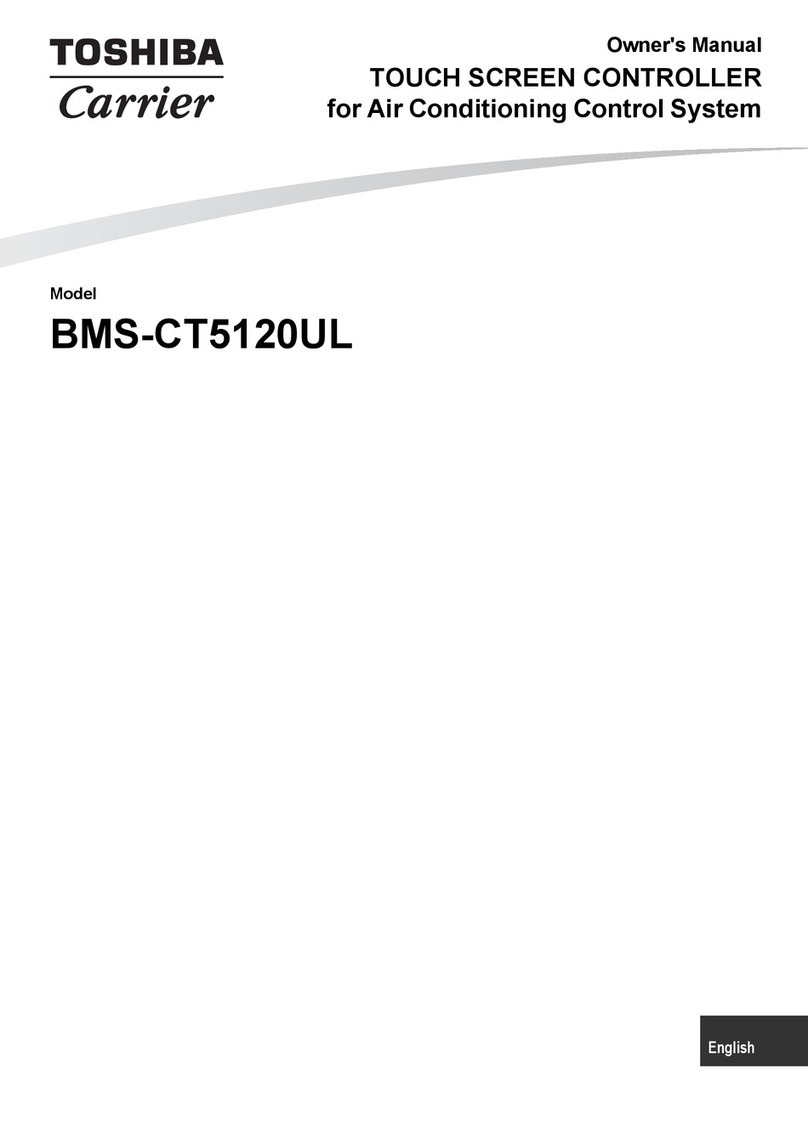
Carrier
Carrier Toshiba BMS-CT5120UL owner's manual
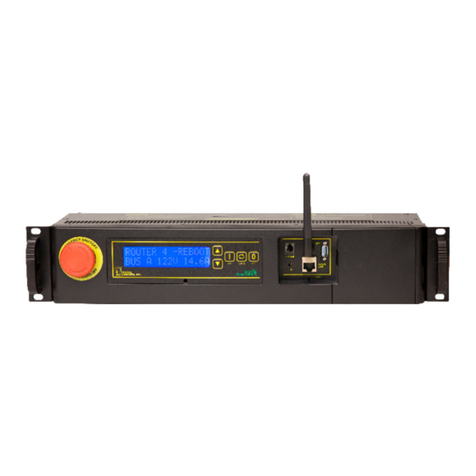
Digital Loggers
Digital Loggers Web Power Switch 7 user guide
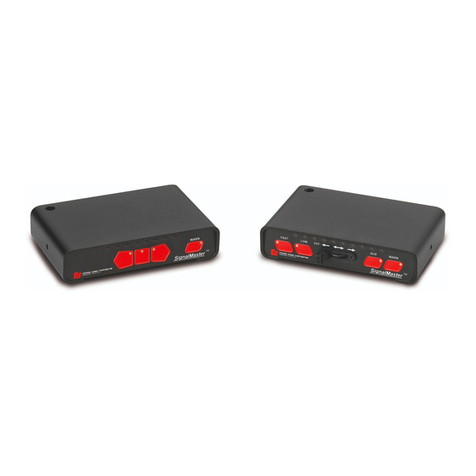
Federal Signal Corporation
Federal Signal Corporation SignalMaster 330104 SMC1 instructions
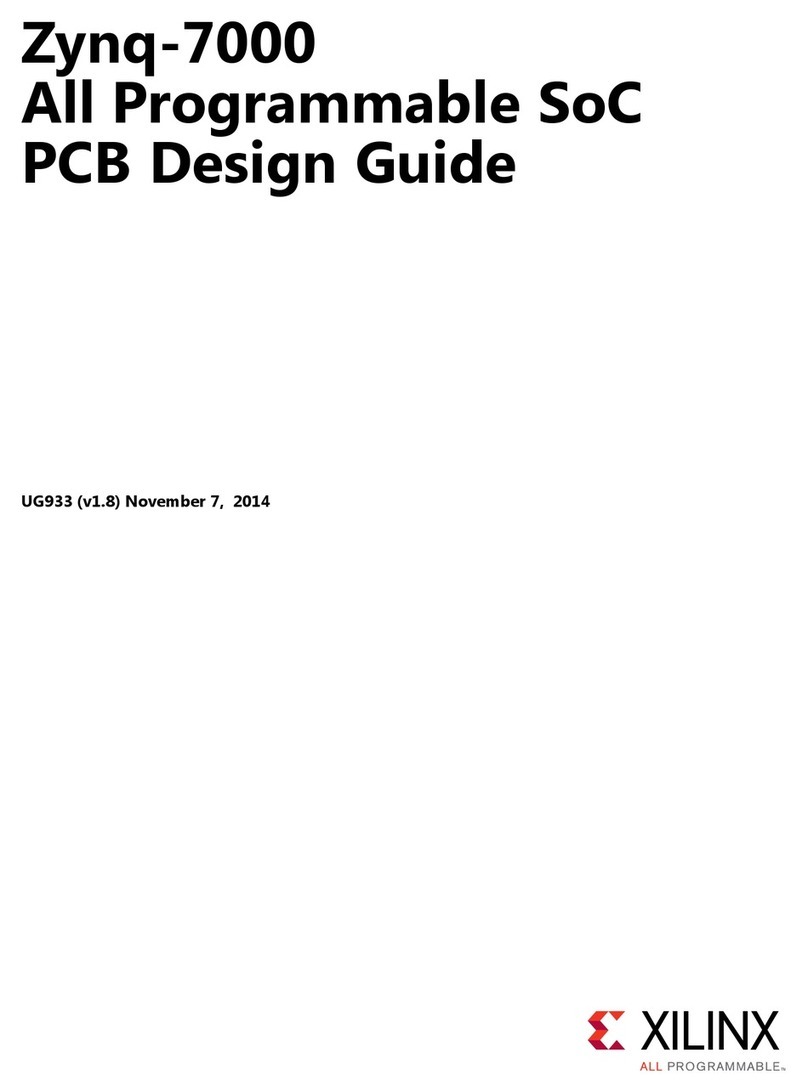
Xilinx
Xilinx Zynq-7000 Design guide

Siskiyou
Siskiyou MC1100e user manual

Emerson
Emerson Bettis Nuclear Series Operation and maintenance manual
